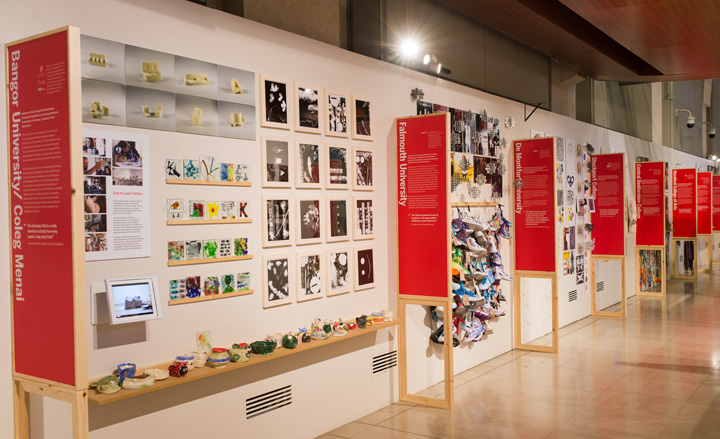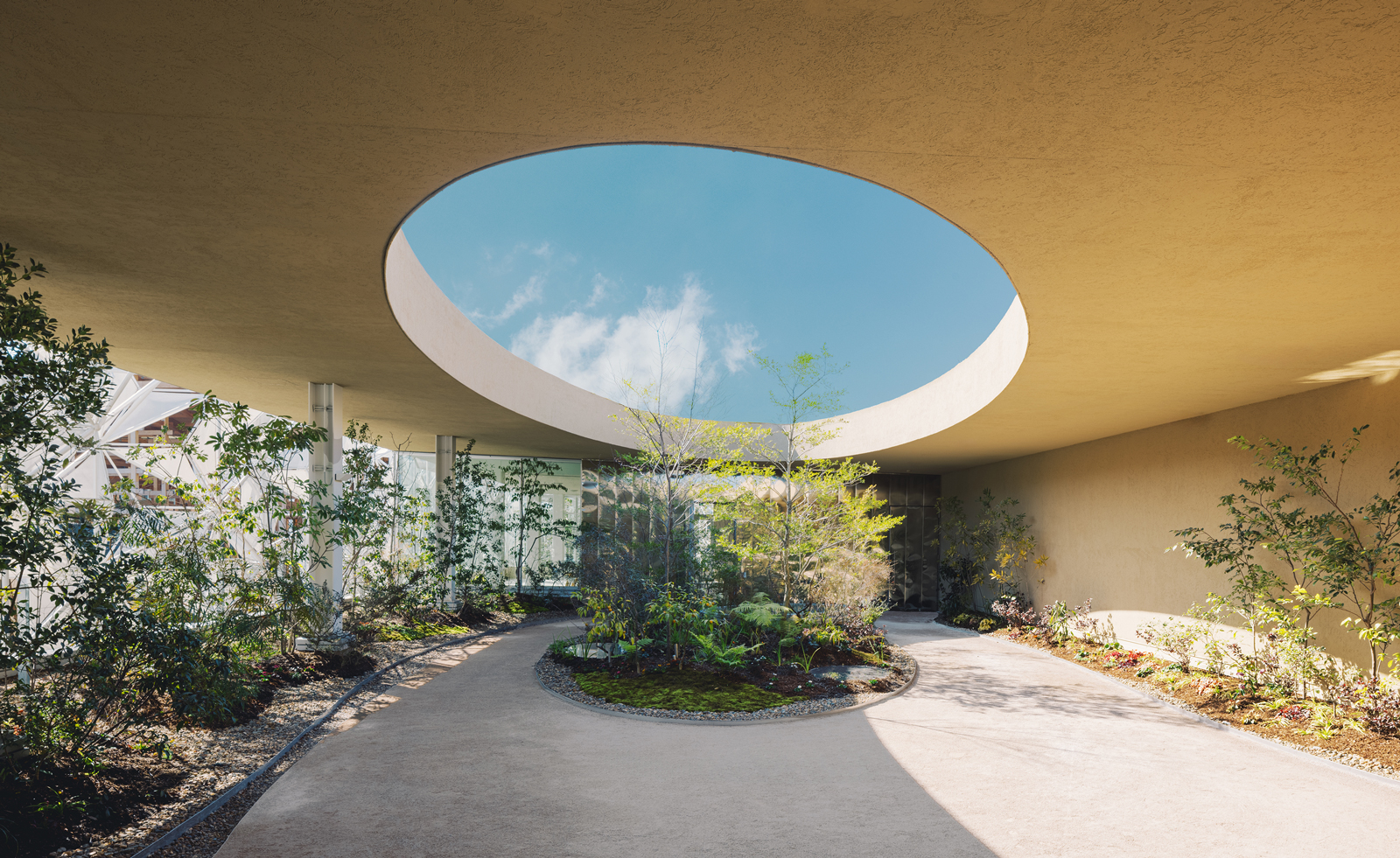The National Art and Design Saturday Club Summer Show, London

The National Art & Design Saturday Club offers young people aged 14 to 16 the chance to tap into art and design courses every Saturday morning at local colleges or universities for free, propelling them along a pathway to higher education, as well as careers in the creative industries. The concept was initiated four year ago by The Sorrell Foundation, a charitable organisation set up by Sir John and Lady Frances Sorrell, who laid the foundations for the scheme’s flourishing contemporary incarnation today.
Over the course of thirty weeks, members delve into disciplines as wide-ranging as drawing, ceramics and sculpture to digital media, photography and product design, as well as visiting London’s top museum - the V&A - and galleries. Moreover, the Saturday Club offers pupils a chance to attend masterclasses with leading industry figures, such as graphic designer and Pentagram partner Domenic Lippa, artist Antony Gormley and designer Thomas Heatherwick.
This finally cumulates in a showcase of work at Somerset House in their own Summer Show, casting the spotlight on the artistic output of the hundreds of teenagers who partake in the club. At the opening of this year’s exhibition, Lady Frances Sorrell announced ‘Creative Career Visits’, a new initiative for the scheme next year, which will see members visiting creative companies to help guide youngsters in making informed choices as they look towards the future. It'll be another springboard for catapulting them into the creative industries.
We spoke with Sir John Sorrell - who, as well as being co-founder of The Sorrell Foundation, also set up the London Design Festival, is a UK Business Ambassador for the creative industries and has just been named Chairman of University of the Arts London - to find out what inspired the Saturdary Club concept…
Is there an international precedent for this kind of organisation?
It's actually a homegrown idea. There was a government policy in the 1950s, 60s and 70s that introduced the Saturday Club across the country. I went to Saturday Clubs myself, as did Frances [Sorrell], John Hegarty, Michael Foreman, and Christopher Lebrun. We set up the National Art & Design Saturday Club to revive what was a brilliant idea and which catapulted the careers of many leading figures in the creative industry. And now we are being asked by countries all over the world if we can help them replicate it.
Why didn't it keep going?
As far as I can tell, it stopped around the 1970s. Government cuts, perhaps? I've never been able to understand why.
What is different about what you are offering today?
What makes this different is that we have created a national network for it. There are 26 different colleges and universities (and one museum) involved across the country and we expect this to go above 30 in the next academic year. Once a year we bring all the tutors together to discuss best practice, and we bring the kids to London to visit all the galleries.
It's about giving young people 'a look in the kitchen', as my wife says. And to hopefully help them to take forward a love of the arts into their careers, no matter what they do. The age of 14 to 16 is a very important one to target because it's an age when a lot of people drop out of these subjects. The classes are providing about 100 hours of extra tuition throughout the academic year.
How is the show at Somerset House curated?
The tutors of each college or university decide what goes in, but the rules are that every young person who attends the clubs has to be represented. All of the people are presented with a certificate of involvement. It's like a mini graduation.
Where did you go to college?
I went to Hornsey College of Art in North London, which has now been swallowed up by Middlesex University. My education was absolutely amazing. I was taught by brilliant people, including Bridget Riley. Every single day there was a tutor in the room. You learned fast and you learned about the importance of working hard and the total joy of creativity. I went to art school when I was 16 and started my own business at 19.
How do you think the UK government can improve its teaching in the creative arts?
We believe that art and design needs to be taught very well at schools, at both primary and secondary stages and all the way through to higher education. We want to see a seamless pathway all the way through to careers in the industry, for those for which it is their vocation. We'd like to see art, design and technology rolled together as they are so closely related. It helps to have an understanding of different disciplines. If we manage to get it right, we have an opportunity to be the greatest creative nation in the world.

From left: Fashion and textile designer Lee Lapthorne, The Sorrell Foundation co-founder Sir John Sorrell, Rt Hon Ed Vaizey, and Pentland Brands creative director Katie Greenyer

Artwork for sale by Club members at Coventry University

Customised trainers by Club members at De Montfort University
ADDRESS
Somerset House
Strand
London WC2R 1LA
Wallpaper* Newsletter
Receive our daily digest of inspiration, escapism and design stories from around the world direct to your inbox.
-
 With glowing honeycomb-shaped booths, this futuristic Japanese restaurant is ramen heaven
With glowing honeycomb-shaped booths, this futuristic Japanese restaurant is ramen heavenAfter a successful U.S. expansion, Kyuramen touches down in Los Angeles.
By Carole Dixon
-
 Women's stories are at the heart of the Cartier Women's Pavilion at Osaka Expo 2025
Women's stories are at the heart of the Cartier Women's Pavilion at Osaka Expo 2025Japanese architect Yuko Nagayama and British artist Es Devlin are behind the architecture for the Cartier Women's Pavilion
By Danielle Demetriou
-
 A Sussex beach house boldly reimagines its seaside typology
A Sussex beach house boldly reimagines its seaside typologyA bold and uncompromising Sussex beach house reconfigures the vernacular to maximise coastal views but maintain privacy
By Jonathan Bell
-
 ‘Humour is foundational’: artist Ella Kruglyanskaya on painting as a ‘highly questionable’ pursuit
‘Humour is foundational’: artist Ella Kruglyanskaya on painting as a ‘highly questionable’ pursuitElla Kruglyanskaya’s exhibition, ‘Shadows’ at Thomas Dane Gallery, is the first in a series of three this year, with openings in Basel and New York to follow
By Hannah Silver
-
 The art of the textile label: how British mill-made cloth sold itself to Indian buyers
The art of the textile label: how British mill-made cloth sold itself to Indian buyersAn exhibition of Indo-British textile labels at the Museum of Art & Photography (MAP) in Bengaluru is a journey through colonial desire and the design of mass persuasion
By Aastha D
-
 Artist Qualeasha Wood explores the digital glitch to weave stories of the Black female experience
Artist Qualeasha Wood explores the digital glitch to weave stories of the Black female experienceIn ‘Malware’, her new London exhibition at Pippy Houldsworth Gallery, the American artist’s tapestries, tuftings and videos delve into the world of internet malfunction
By Hannah Silver
-
 Ed Atkins confronts death at Tate Britain
Ed Atkins confronts death at Tate BritainIn his new London exhibition, the artist prods at the limits of existence through digital and physical works, including a film starring Toby Jones
By Emily Steer
-
 Tom Wesselmann’s 'Up Close' and the anatomy of desire
Tom Wesselmann’s 'Up Close' and the anatomy of desireIn a new exhibition currently on show at Almine Rech in London, Tom Wesselmann challenges the limits of figurative painting
By Sam Moore
-
 A major Frida Kahlo exhibition is coming to the Tate Modern next year
A major Frida Kahlo exhibition is coming to the Tate Modern next yearTate’s 2026 programme includes 'Frida: The Making of an Icon', which will trace the professional and personal life of countercultural figurehead Frida Kahlo
By Anna Solomon
-
 A portrait of the artist: Sotheby’s puts Grayson Perry in the spotlight
A portrait of the artist: Sotheby’s puts Grayson Perry in the spotlightFor more than a decade, photographer Richard Ansett has made Grayson Perry his muse. Now Sotheby’s is staging a selling exhibition of their work
By Hannah Silver
-
 From counter-culture to Northern Soul, these photos chart an intimate history of working-class Britain
From counter-culture to Northern Soul, these photos chart an intimate history of working-class Britain‘After the End of History: British Working Class Photography 1989 – 2024’ is at Edinburgh gallery Stills
By Tianna Williams